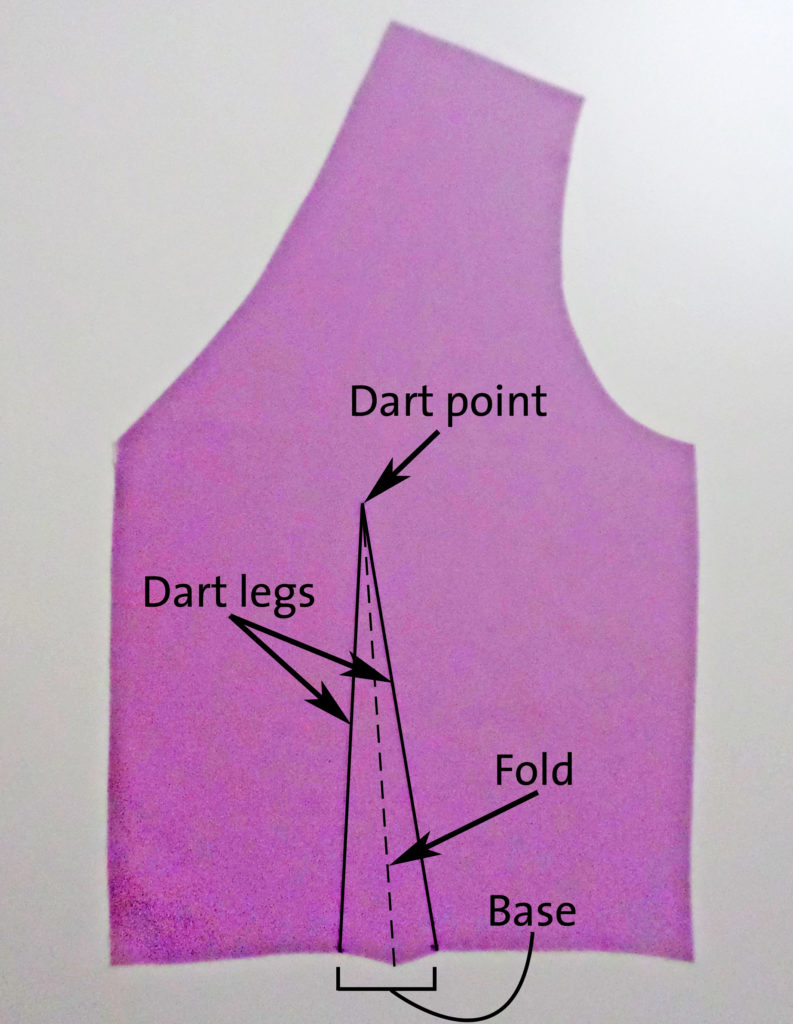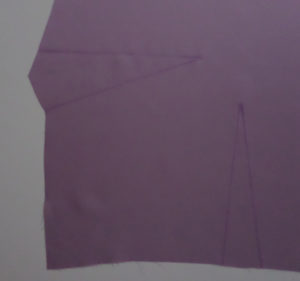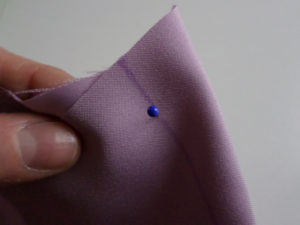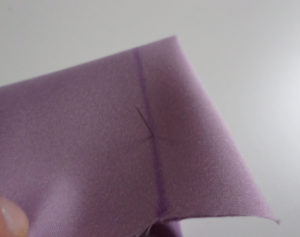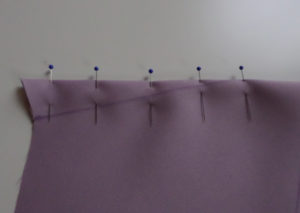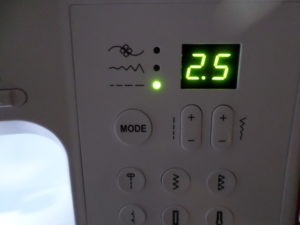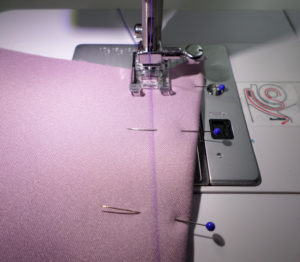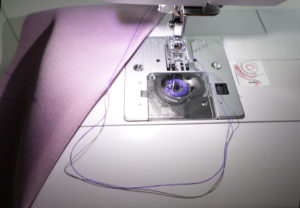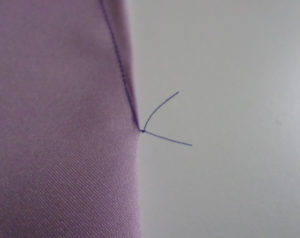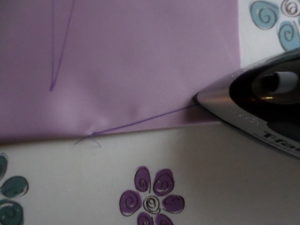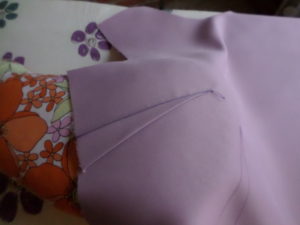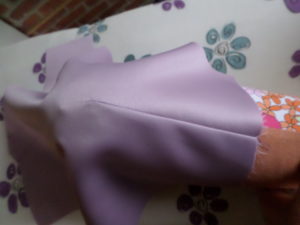Last week, I shared how to sew a dart in fabric for the Simplicity SewStylish 8328 View C top. Counting the bust darts, and the waist darts on front and back, this top has 12 darts to sew in the fabric and lining!
This post, however, focuses on two more darts, the most important of them all. They are the lace overlay bust darts. I’m going to show you a different technique for sewing darts in lace, a technique called lap and appliqué. It takes more effort, but the results are worth it.
Lace is special. It’s delicate, romantic, feminine, and dressy. You don’t want to sew it into thick, opaque layers, but keep it as airy and open as it should be.
Why sew only bust darts in the lace overlay? Before we get started, I want to answer this question. Waist darts would break up the lovely lace selvage along the top’s overlay hem. The pattern designers simply shifted a little extra fabric into the bust dart value on the overlay, which will float over the slightly more fitted fabric layer of the top.
Use thread to mark the dart legs on lace
It’s difficult to make a mark on lace that is clear and removable. To get around that, I machine thread-trace the dart legs on the lace.
- Copy the dart onto a piece of tissue paper. Mark the dart as well as the pattern piece’s side-seam edge above and below the dart base. Trim the tissue to the side-seam edge marking.
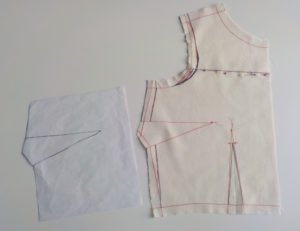
Trace the dart onto tissue paper. - Pin the marked tissue paper to the wrong side of the lace. I place the pins far enough from the dart legs that I don’t have to worry about removing them during sewing.
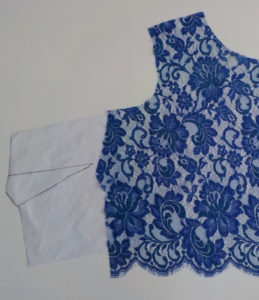
Slide the tissue paper dart underneath the lace. 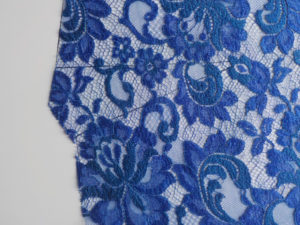
You can see the dart marking through the lace. 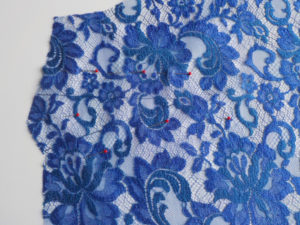
Pin the lace and tissue paper together. - Change your needle thread to a color that contrasts with the lace. You only need to change the needle thread. The bobbin thread can match the lace.
- Set the stitch length to 4 mm for a thread-tracing/basting stitch. Before you sew, test the basting stitch on a lace and tissue scrap! This is important. Make sure your sewing machine is happy and disinclined to eat the tissue paper or the lace.
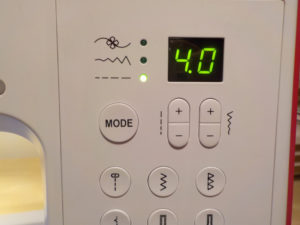
Set a long stitch length for thread-tracing. - Starting at the side-seam edge each time, baste the dart legs to the point. Don’t backtack or lockstitch at either end – you want to be able to remove the thread tracing later.
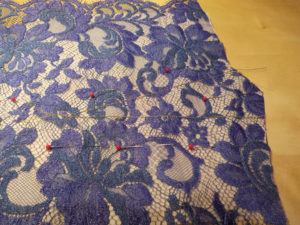
The yellow thread shows up nicely, doesn’t it? - Turn the lace over and carefully tear the tissue out of the basting stitches. Now the dart is clearly marked until you decide to remove the thread tracing.
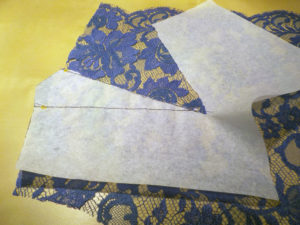
Remove the tissue paper from the lace’s wrong side.
Get set to lap and appliqué
I want to lap the bust dart’s upper leg over the lower leg, like a roof shingle. The appliqué edge is more likely to lie – and stay – flat that way.
- Select a motif to follow in the upper portion of the dart value. Most lace has a motif, for example the flowers shown, set into a “ground” fabric that is like net. (Please note that this is a vast oversimplification of lace, which comes in many types. Find out more about lace varieties and how to sew them in our SewStylish Spring 2017 digital issue, in Threads back issues, or at ThreadsMagazine.com.) With a sharp pair of embroidery scissors, a pair that cuts to the tip, snip the threads connecting the motifs to the lace ground, following an approximation of the upper dart leg, to the dart point.
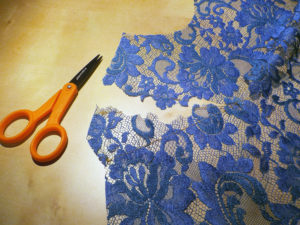
Snip through the lace ground to create the appliqué edge. 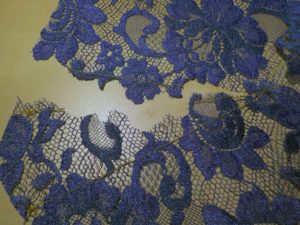
Here is a closer look. It’s not important to follow the dart leg perfectly. - Lap and align the upper dart leg over the lower dart leg. This is much easier done over a ham, which will support the dart’s shape.
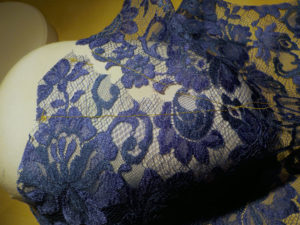
Now for some sewing magic. The dart goes from this . . . 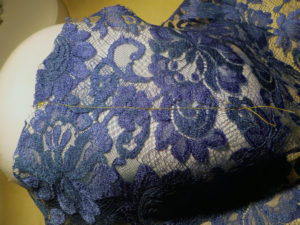
. . . to this! It is hardly visible. - Hand-baste the lapped dart. I can almost hear the cries of dismay over the Internet. Yes, you should hand-sew this, it’s quick! I used orange thread so you could see where I stitched. You can stitch it right on (but not TO) the ham to maintain the dart shape.
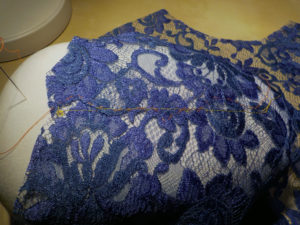
Make tiny running stitches to hold the lapped lace in place. - Change your sewing-machine needle thread to a color that matches the lace. Set the stitch to a narrow zigzag, like this:
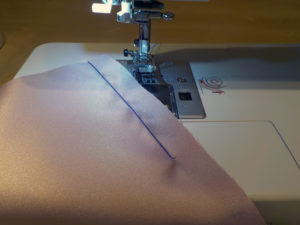
Set your sewing machine for a tiny zigzag stitch. - Sew from the dart base to the tip. The narrow zigzag should be a little bit within the overlapped lace edge, to sew through both layers. Sew very slowly and carefully, pivoting wherever necessary, to zigzag close to the lapped lace edge, appliquéing it to the lace layer beneath. After sewing to the dart tip, raise the presser foot and gently remove the work from your sewing machine. Leave the threads long enough to tie a knot on the wrong side at the dart point.
- Remove the contrasting basting stitches. Tweezers are helpful for this part.
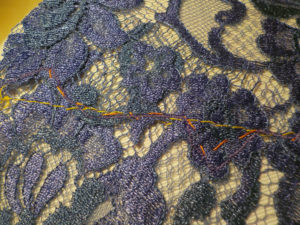
Now that the appliqué is complete, you can remove the thread tracing and basting. - After knotting the thread, use your hand-sewing needle to draw the thread from the knot at the dart tip through the stitching leading up to it, then snip the thread. This hides the thread ends instead of having them poke out of the dart tip.
- Trim the excess lace dart value on the wrong side. Use the embroidery scissors to get within about 1/8 inch of the narrow zigzag stitching.
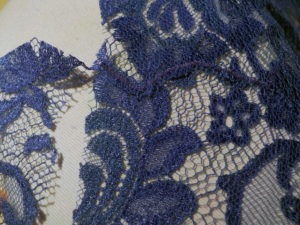
Trim close to the zigzag stitching. - Press the dart, right side down over the ham, and add a tiny drop or two of Fray Check to the stitching at the dart tip. This is just a precaution I always take to make sure the thread knot stays neat.
All set! The lapped and appliquéd dart isn’t too obtrusive. It doesn’t take away from the integrity of the lace.
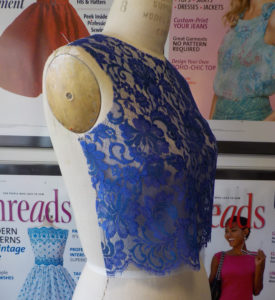
Repeat the process with the other bust dart in the lace, and you’ll be done with the darts on this top.
If you wonder at this point whether it is worth the effort to lap and appliqué a dart in lace, take a look at a dart sewn in the usual fashion:
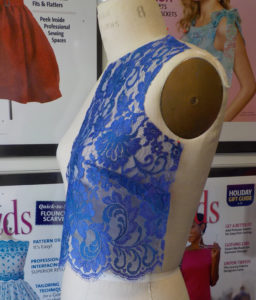
I know which one I prefer!
Get to sewing those darts, because next week we take on the separating zipper at the center back of the Simplicity SewStylish 8328 View C top.
